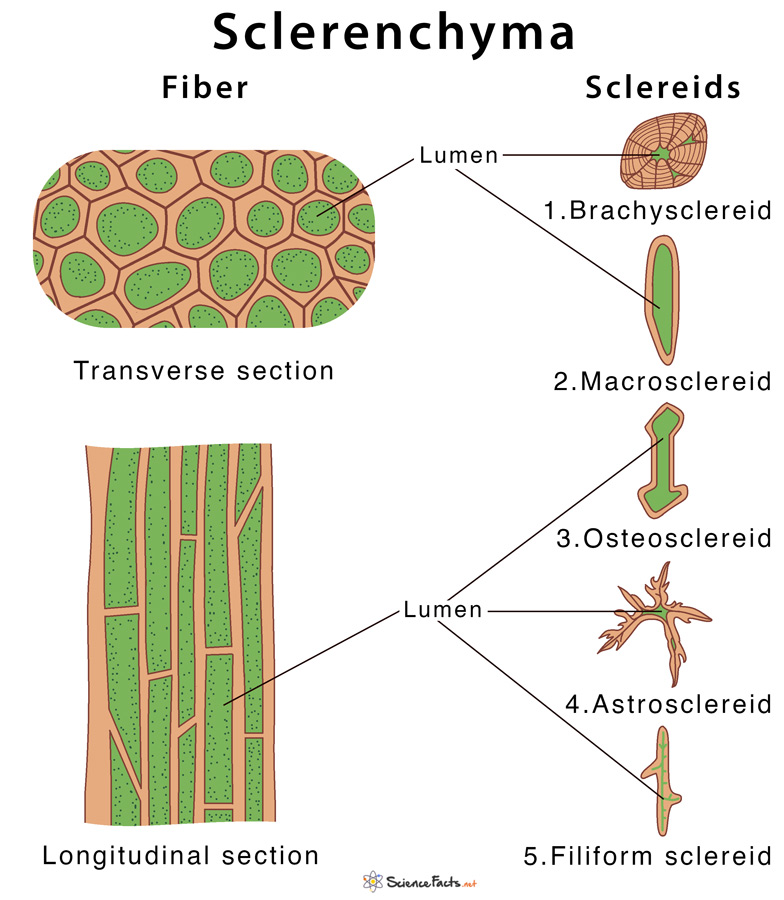Sclerenchyma
What is Sclerenchyma
Sclerenchyma is a dead cell that has thick secondary cell walls found in the nongrowing regions of the plant body, such as bark and stems. They are a type of simple permanent tissue that also forms a part of the ground tissues along with parenchyma and collenchyma in plants.
The term ‘sclerenchyma’ was derived from the Greek word ‘Scleros’ which means harder and ‘Enchyma’ meaning infusion. Mettenius discovered sclerenchyma in the year 1805.
Where are Sclerenchyma Located in Plants
They are usually found in the nongrowing regions of the plant such as leaf vein, stem, branches, trunk, and bark. Sclerenchyma is present in all kinds of plants, including grasses, trees, and flowering plants.
Characteristics
- Dead cells at their maturity that are incapable of cell division
- During the initial growth period of the plant, sclerenchyma is found as living cells, forming annual growth rings
- Varies widely in shape and size, based on which they can be long, narrow, and pointed at the end
- Contains two cell walls; a primary cell wall and a secondary cell wall with thick deposition of lignin, cellulose, and hemicellulose, that makes up 90% of the total cell volume
- The cell wall is impermeable to even small molecules like water, gases, and solutes
- The cells are very tightly packed with the complete absence of spaces between them
- Presence of very little protoplast inside the cell with the absence of cell organelles
- Based on structure, sclerenchyma tissue is classified into two types: fibers and sclereids or stone cells. Sclereids are further divided into five types based on their shape as follows: brachysclereid, macrosclereid, osteosclereid, astrosclereid, and filiform sclereid
Functions
Based on the structure and location where they are found in the plant, the two types of sclerenchyma tissues perform the following functions:
- Structure: Providing the skeletal covering of the plant, thus giving shape and morphology
- Support: Contributing to the rigidity of the plant and thus provide permanent structural support
- Strength and Protection: Giving mechanical strength and protection to the inner, delicate parts of the plant to withstand outside stress
- Hardness: Sclerids, forms the shell of nuts, the coat of many seeds, and the stone of cherries and plums
- Texture: Sclerids provide gritty texture to some fruits such as pears and guavas
-
References
Article was last reviewed on Saturday, July 4, 2020





nice ,I like it .it help me to study
I get support from sciencefacts.net